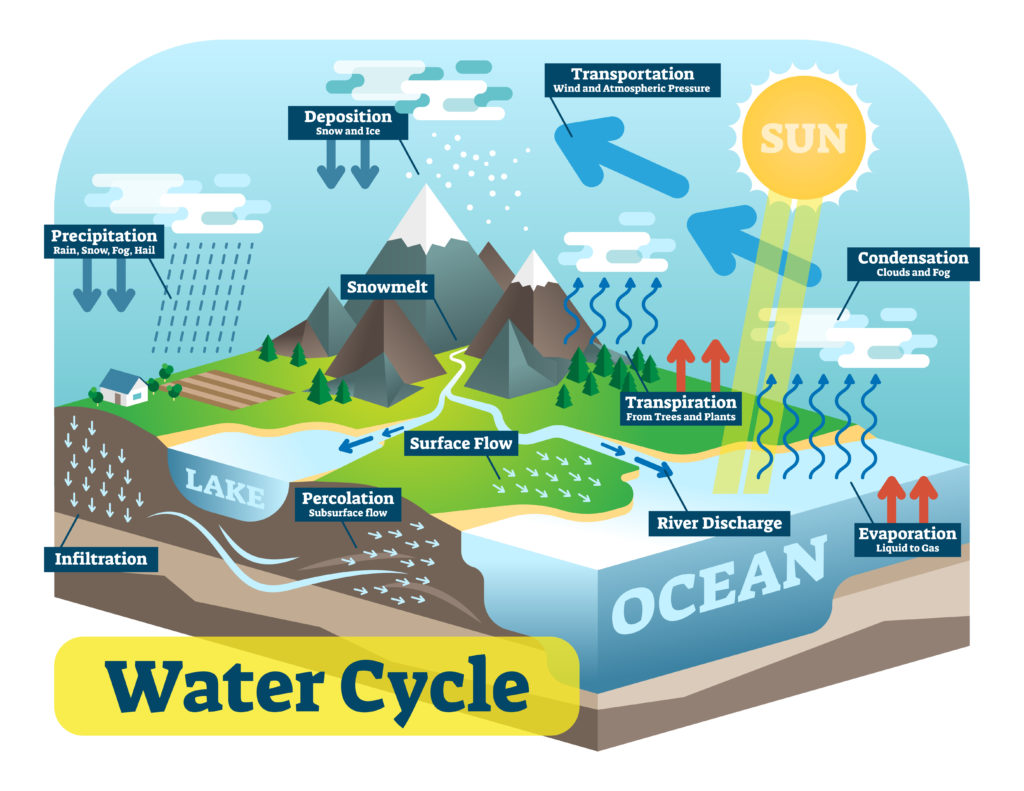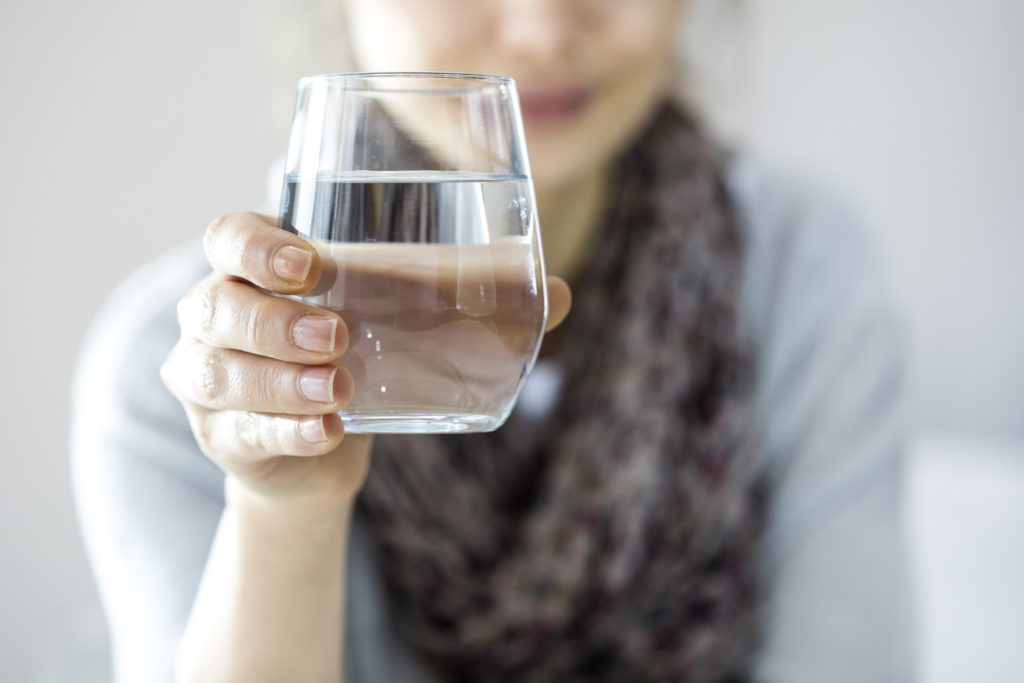By: Isabela Claret Torres, MSc, Ph.D.
The water cycle is very simple. Water comes to the surface in the form of rain, part of it infiltrates the soil, runs off into a river, lake or ocean. If takes the river route it flows down to a lake that can or not have an output. Or the river flows to another bigger river and so on till it reaches the ocean. The waters from the ocean, rivers, lakes, on the soil, in plants evaporates to the atmosphere, to become rain and come back.
Aquifiers
The water that infiltrates the soil can feed an aquifer. Aquifers are groundwater rivers or “lakes”, most of the time of pristine freshwater, and can be buried or feed lakes, rivers, or come out as a spring. Aquifers can be huge, with the two largest aquifers on the planet located in South America. The first one localized totally in Brazil in the States of Pará, Amapá e Amazonas called SAGA has 162.520 km³ of water. The quantity could support all the water consumption of the world for 250 years. The second is the Guarani, it goes under Brazil, Argentina, Uruguay and Paraguay. It has 1,2 million km² of extension and 70% of it is inside Brazil.
Fresh Water
The amount of freshwater is continuously being reduced due to the disruption of this cycle by human activity.

Pollution from Cities
In addition, the construction of roads, streets and cities have added to the depletion of water resources. Each day they put more concrete on top of the soil in plazas, backyards any other places that still has soil. The water does not infiltrate anymore and does not feed the aquifers and the springs. Again, the water just runoff to a river or a lake taking now all the pollution that we have in big cities, causing more environmental impact. It is not just mother nature that suffers with that, we humans too, as the amount of water in the runoff is more than the river can take, we see severe flooding everywhere.
Remember that I said about filling up with soil the water bodies? So, no place for water and too much water with more sediment, major flooding and destruction! Moreover, man discard its wastewater (domestic and industrial) in water bodies. Few countries really treat their sewage. Even with treatment, they are unlikely to rid the water of pollutants entirely.
Today a great concern is the impact of the presence of pharmaceuticals residues that are causing damage in the wildlife. These are not taken out during treatment. Its is well known that the presence of estrogen in freshwater ecosystems originated from the birth control pills residue in the sewage altered the male fish to become female, disrupting all the reproduction cycle of the community. In many countries like Brazil, the sewage does not go through all the treatment that suppose to, and even so, a great part of the domestic sewage is dumped directly into rivers.
Water Treatment
Approximately 70% of the planet is made up of water. 97% of this is salt water that cannot be used to consumption, agriculture or in the industry without a costly treatment. Of the 3% fresh water. 71% is as ice in the poles, 18% in groundwater and aquifers, 7% rivers and lakes and 4% of air humidity. Of the 3% of the freshwater on the planet only 1% is potable water.
Water Producers
One way to change this scenario is the “water producers”. I learned about this concept when I was working for a watershed management organization around 2012. From that point, I believed it to be a global concept. But today I revisited the subject. To my surprise, when I searched on google for “water producers”, it gives pages only with a list of the 10 biggest companies that sell bottled water. But if I do my search in Portuguese (Produtores de Água), I get quite a few interesting results.
This term is used in widely within The Brazilian National Water Agency (ANA), that manages the water resources in Brazil. The Program use the concept of payment for environmental services, which stimulates the producers (in this case any type of famers) to invest in the care with the treat with the water, receiving technical and financial support to implement practices to protect the quality and quantity of water. Doing this the farmer improve the quantity and quality of water in the region that will benefit everyone.
In in many ways, you can be a water producer. If you improve wastewater treatment, if you conserve water, and if you plant trees to help enhance the infiltration of water and feed the springs and the aquifer. And if apply this concept of Water Producers worldwide. And apply to other places as cities. We can give incentives people to plant trees in their backyard or empty pieces of land. We should stimulate people to have as much as places for the water to infiltrate.
Water Credits
This could reduce a lot the runoff of water and flooding in the cities, infiltrating the water and feeding the aquifers or the groundwater. We could think about a Water Credit (based on an entity’s water footprint), like the Carbon Credit or Plastic Credit and people could make money to support more of their environmental actions.
About the Author:
Isabela started her work with the environment in 1993 as a Biology Bachelor student at the highly regarded Federal University of Minas Gerais (UFMG/Brazil). Later she joined the Graduate Program on Ecology, Conservation and Management of the Wildlife of the same University (UFMG/Brazil) where she received her Masters degree in 1999. Later, she received her Ph.D. on Soil and Water Science at the University of Florida (USA). During her Ph.D. studies she received an Outstanding Student Poster Award at the ASLO (American Society of Limnology and Oceanography) 2006 Summer Meeting held in Victoria (Canada). After working for the State Government Secretary, consulting environmental company and watershed management company she began her post-doctorate in the Geography Department at UFMG (Brazil). Throughout her career she gathered knowledge and specialized on Biology, Ecology, Soil Science, Limnology, Paleolimnology, Biogeochemistry, Organic Geochemistry, Metal and Environmental pollution.
Sources:
ANA. 2022. Produtor de Água — Português (Brasil) (www.gov.br)

